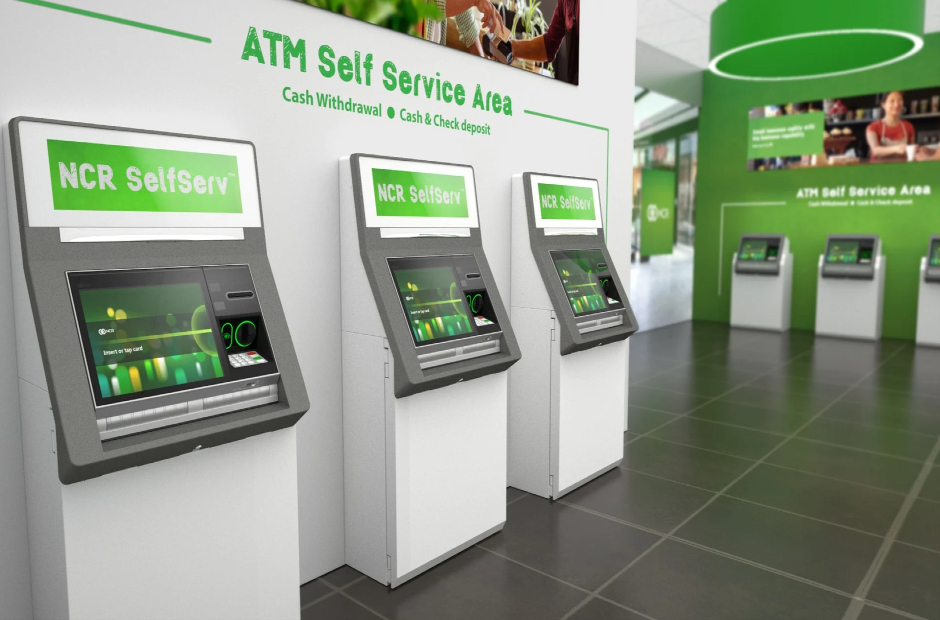Interactive banking kiosks have become increasingly common in recent years, providing customers with a convenient and efficient way to perform a variety of transactions. However, this convenience comes with the inherent risks of digital transactions, making security and privacy paramount. This article explores the various measures that ensure data security and privacy in interactive kiosk banking. We will be discussing regulatory compliance and offers insights into successful implementation strategies.
The Importance of Security Measures in Interactive Kiosks

In today’s digital age, interactive kiosks have become increasingly prevalent, offering convenient access to information, services, and transactions. However, with this widespread adoption comes the critical need for robust security measures to safeguard sensitive data, protect user privacy, and prevent unauthorized access or malicious activities. The importance of CAPTCHA is also a thing to keep in mind when talking about online security.
Why data Security Matters
In an era of heightened cyber threats, ensuring the security of customer information and preventing fraud are top priorities for any banking institution. Interactive kiosks, as public-facing interfaces, are especially vulnerable to attack.
Without adequate security measures, fraudsters could potentially intercept transactions. As well as access sensitive data or even manipulate the kiosk software for malicious purposes. The consequences could be devastating, including financial loss and damage to the bank’s reputation. Therefore, data security is one of the top priorities.
Building trust
Beyond preventing financial and reputational damage, robust security measures are key to building customer trust. Customers who are confident that their data is secure will likely use the interactive kiosks. Then leading to increased adoption and potential cost savings for the bank.
Security Features in Interactive Kiosks
Interactive kiosks are becoming increasingly prevalent in public spaces, offering convenience and accessibility. However, their widespread usage also necessitates robust security features to safeguard sensitive data and protect against potential cyber threats.
Encryption
Encryption involves converting data into a code to prevent unauthorized access. All data transmitted between the kiosk and the bank’s servers should be encrypted using secure protocols, such as Secure Sockets Layer (SSL) or Transport Layer Security (TLS). To ensure that even if the data is intercepted, it would be meaningless to the attacker.
Biometric Authentication
Biometric authentication measures, such as fingerprint or facial recognition, offer a highly secure method of verifying a customer’s identity. These technologies are becoming increasingly common in interactive kiosks, adding an extra layer of security and making it much more difficult for fraudsters to gain unauthorized access to accounts.
Antiskimming Measures
Skimming is a technique where fraudsters capture card data using a device fitted over the card slot. To combat this, banks can implement various anti-skimming measures in their kiosks. Such as jitter technology, which disrupts skimming device operation, or optical and mechanical sensors that detect tampering.

Data Privacy Regulations and Compliance
Banks are subject to a variety of data privacy regulations, such as the General Data Protection Regulation (GDPR) in the EU, or the California Consumer Privacy Act (CCPA) in the US. These regulations stipulate strict data collection, storage, and processing requirements, and non-compliance can result in significant fines.
Banks must therefore ensure that their interactive kiosks comply with these regulations. Which may involve measures such as obtaining customer consent for data processing or implementing robust data protection policies.
Educating Customers About Security Measures
Banks must clearly communicate the security measures in place at their interactive kiosks. This could involve signage at the kiosk, informational brochures, or staff available to answer questions. Banks could also offer digital literacy training to help customers understand the importance of measures such as PIN protection or biometric authentication.
Beyond in-person education, banks should also consider using their online platforms to educate customers about kiosk security. This could include blog posts, videos, or social media campaigns explaining the various security features and offering tips for secure transactions.
examples of data security
Here are some of the banks that successfully ensured security and privacy in interactive kiosks:
Bank of America
Bank of America has been a pioneer in the use of biometric authentication in its interactive kiosks. Customers can use their smartphone’s fingerprint or facial recognition features to authenticate transactions, providing a secure and convenient alternative to traditional PIN-based authentication.
Wells Fargo
Wells Fargo has implemented a range of security features in its interactive kiosks, including encryption, biometric authentication, and anti-skimming measures. Moreover, they have placed a significant focus on educating their customers about these measures, leading to high customer trust and adoption rates.
Citibank
Citibank has strongly emphasized compliance, employing a team of data privacy officers to ensure that its interactive kiosks meet all relevant regulatory requirements. This rigorous approach to compliance, combined with robust security measures, has helped Citibank maintain a strong reputation for security and privacy.
Conclusion about data security
As interactive kiosk banking becomes increasingly prevalent, banks must prioritize the security and privacy of their customers. This involves implementing robust security measures and ensuring regulatory compliance. Educating customers about these measures builds trust.
Banks that have successfully implemented these strategies, like Bank of America, Wells Fargo, and Citibank, serve as excellent examples for others to follow. The reward for this investment is clear: increased customer trust, higher adoption rates, and, ultimately, a more efficient and cost-effective service.
Make sure to check out our other articles:






